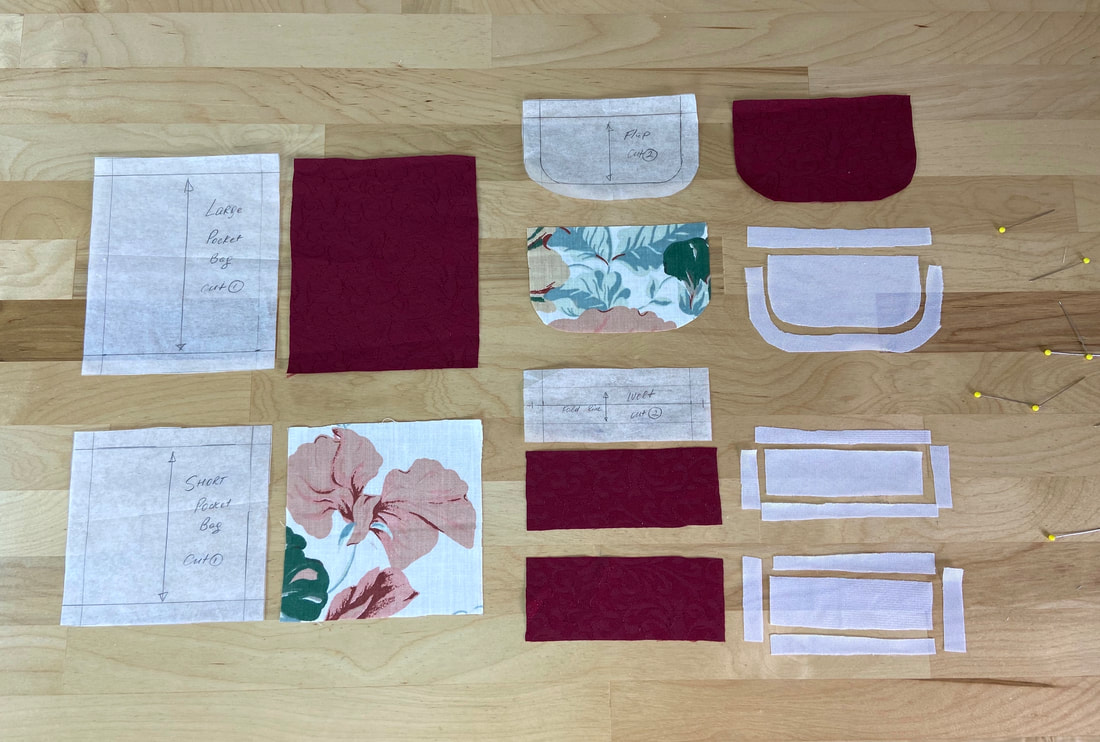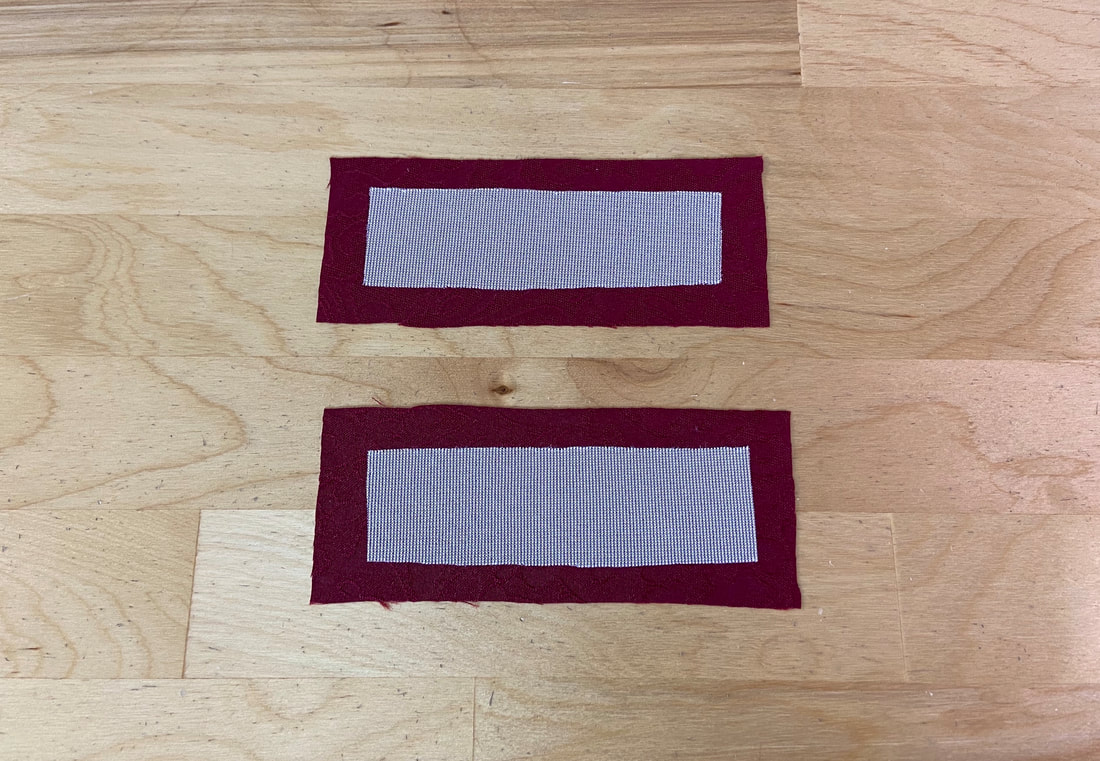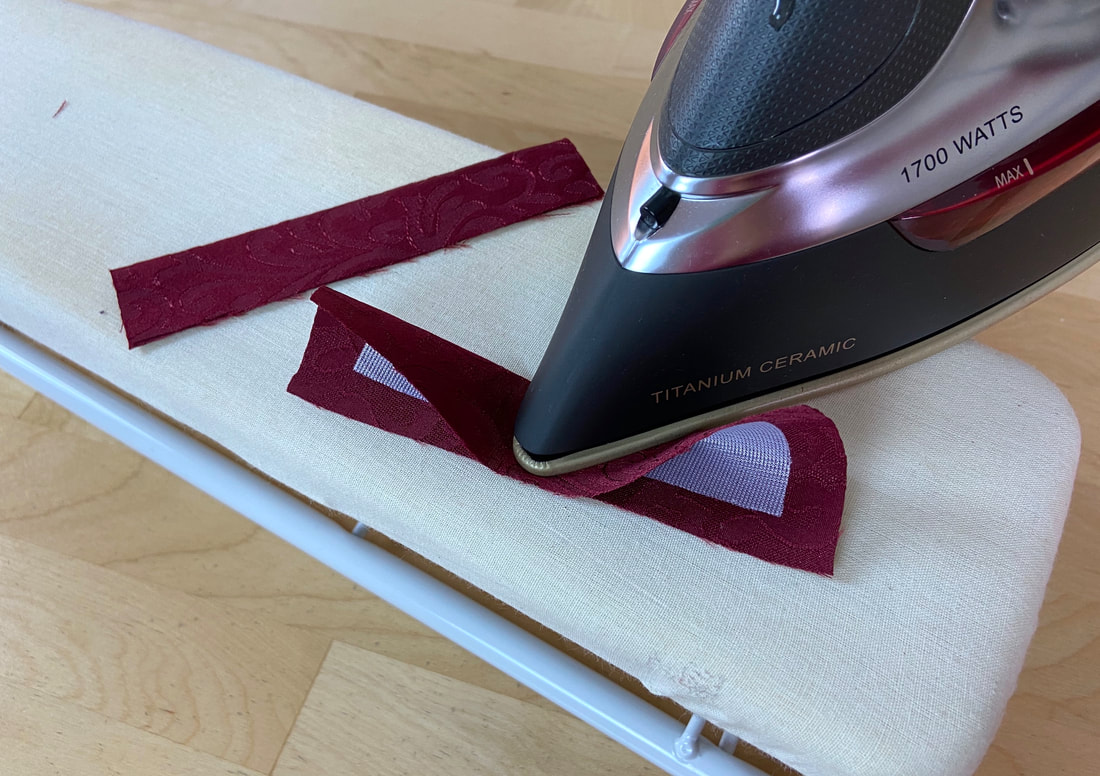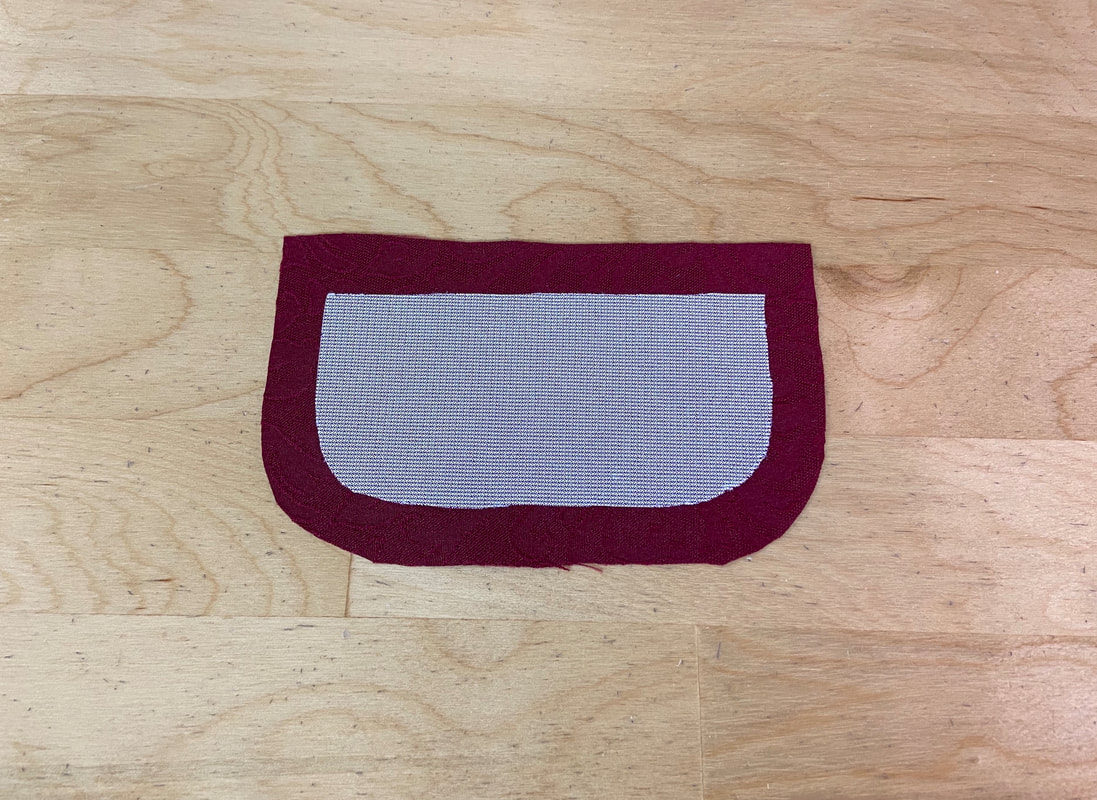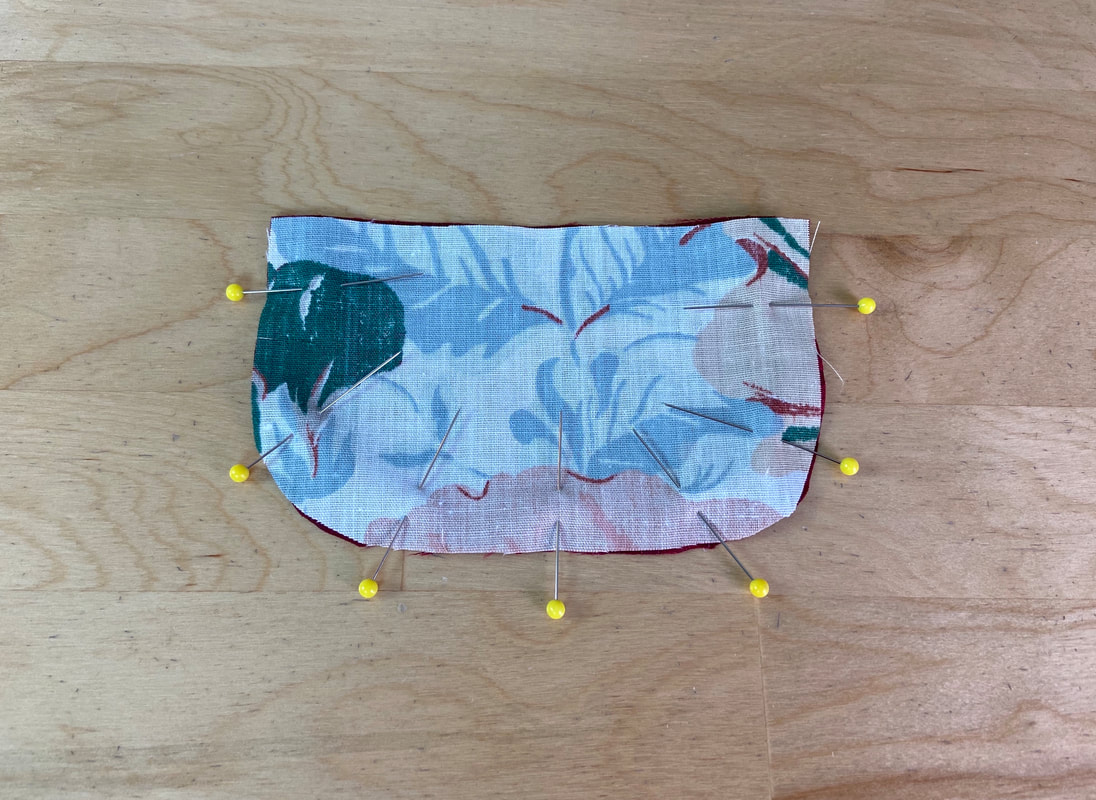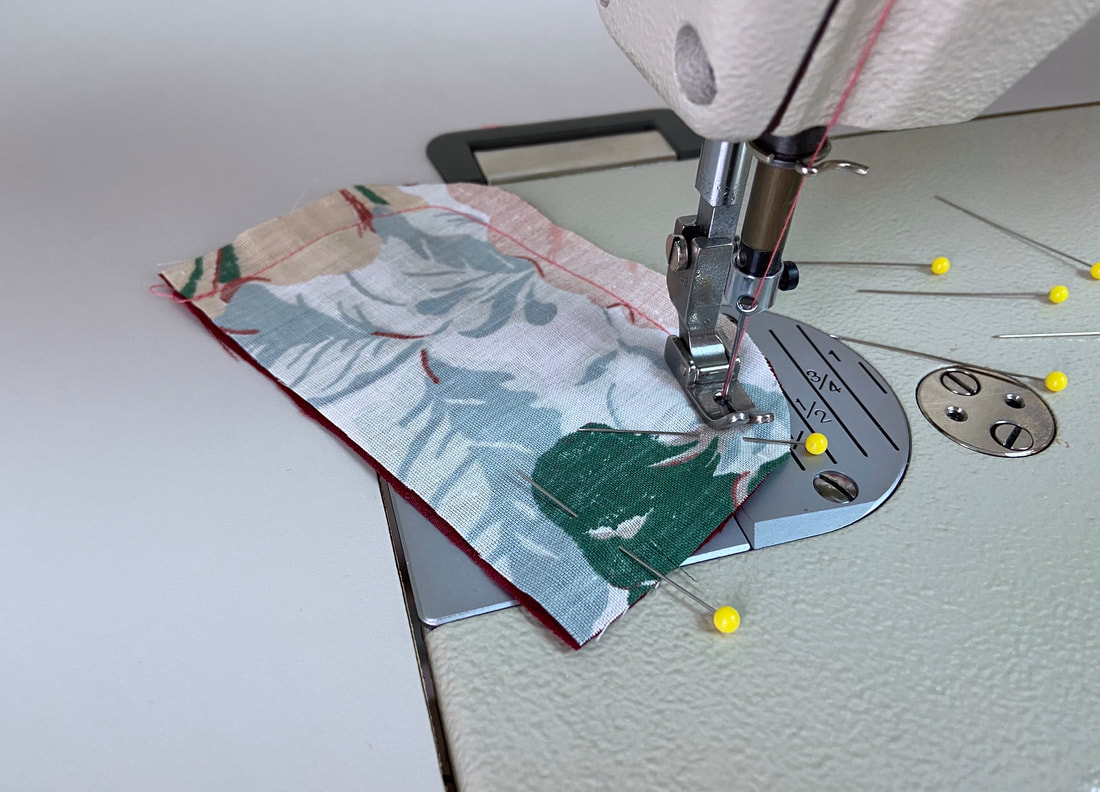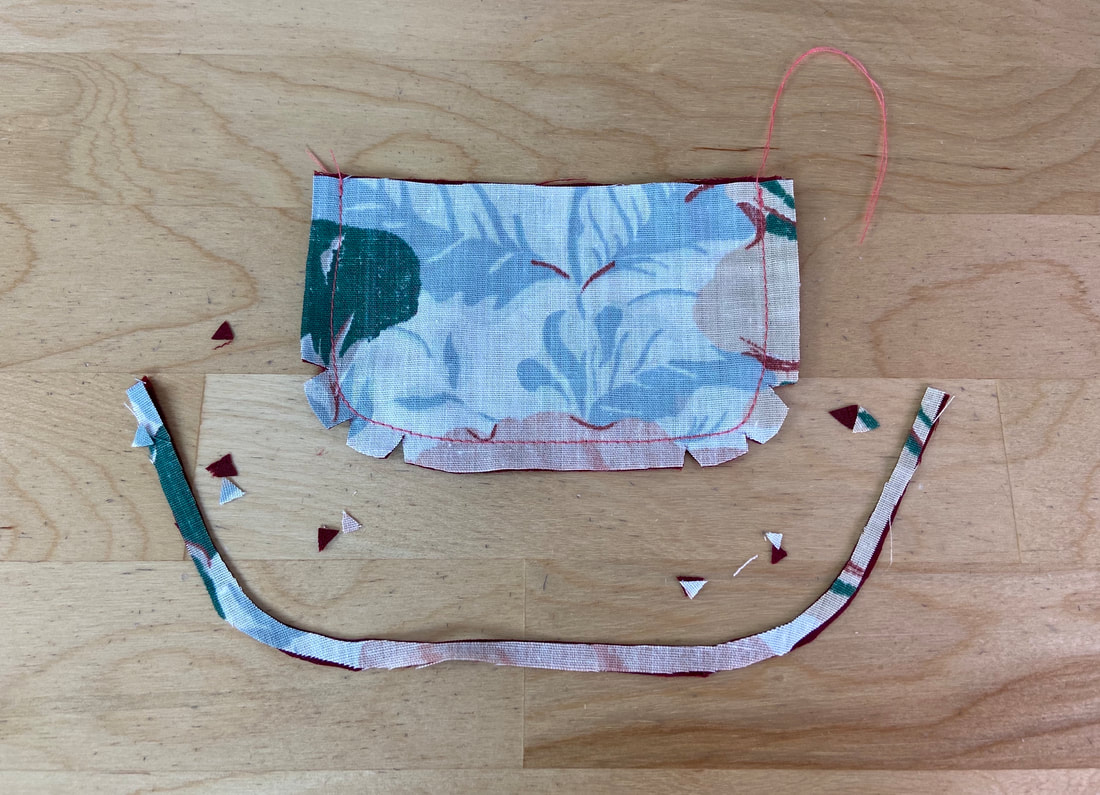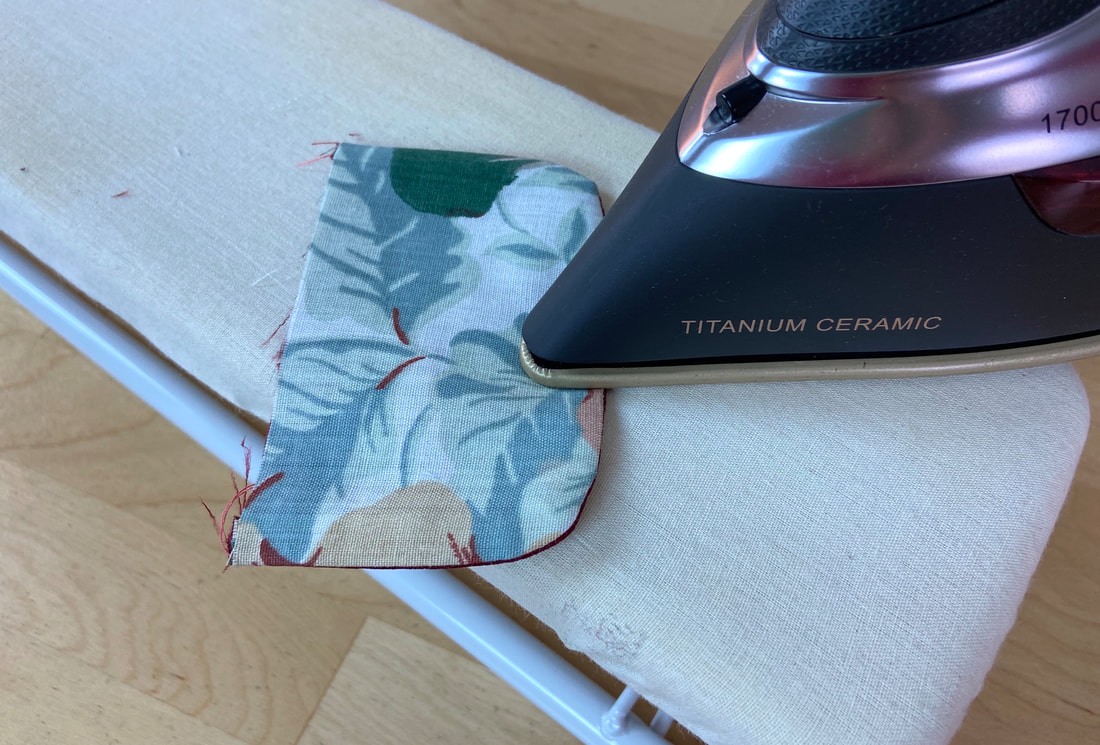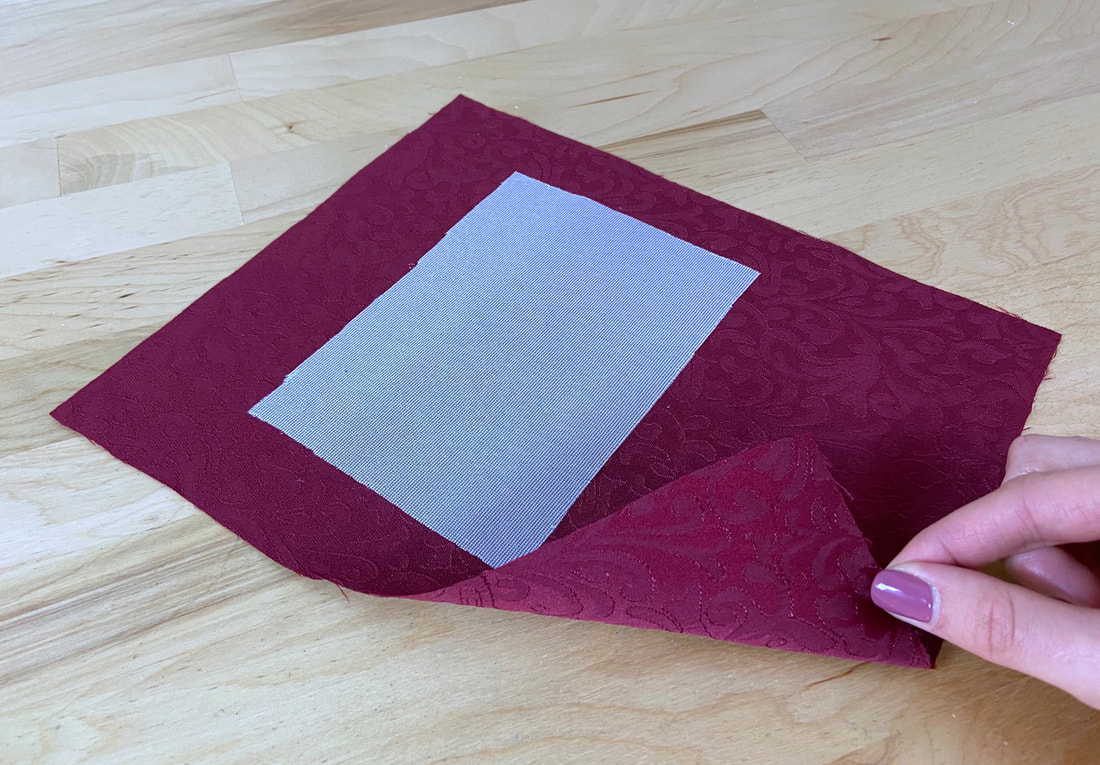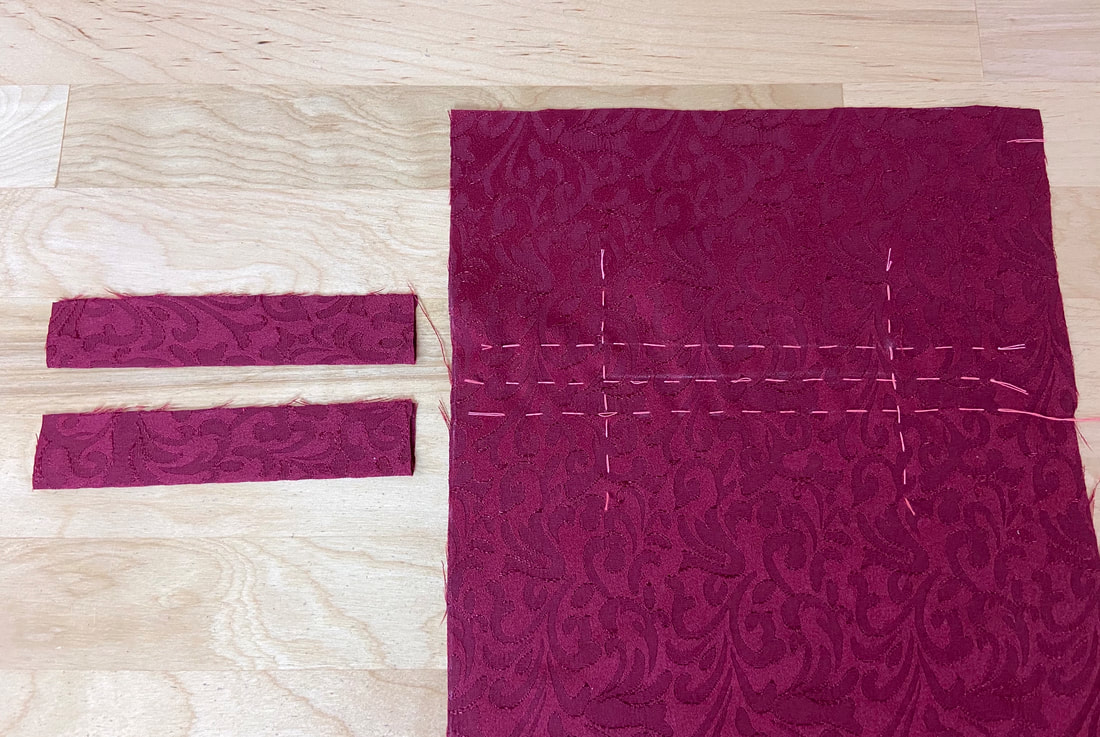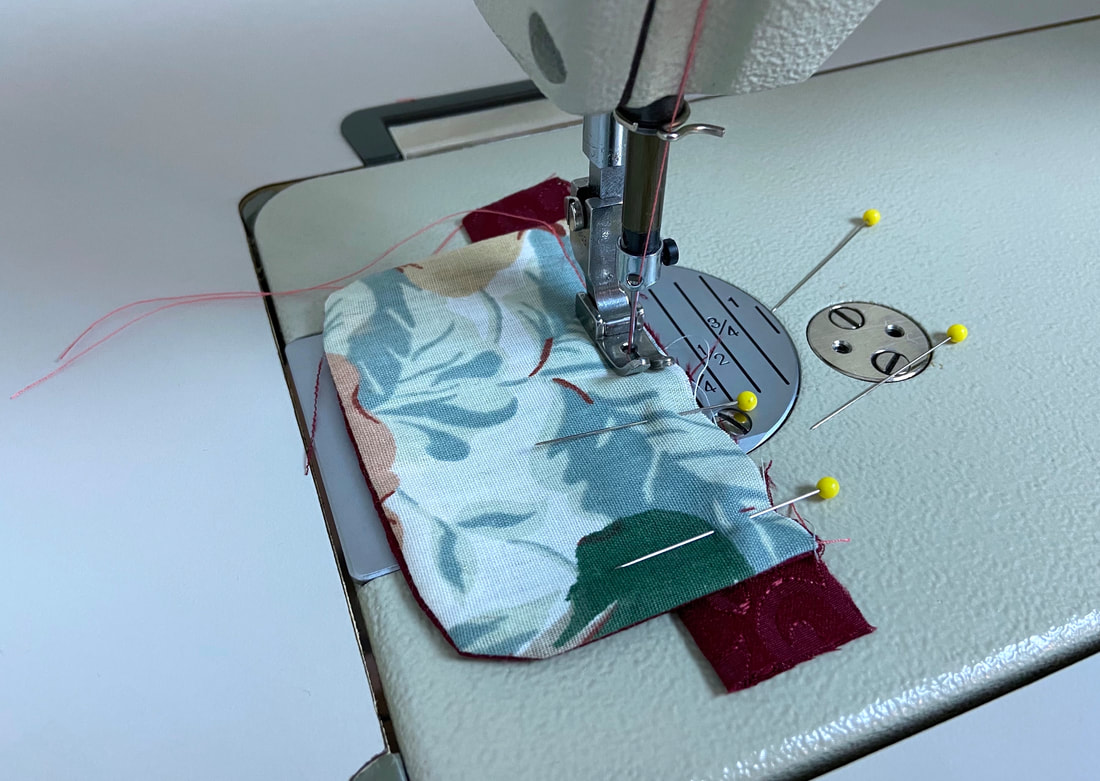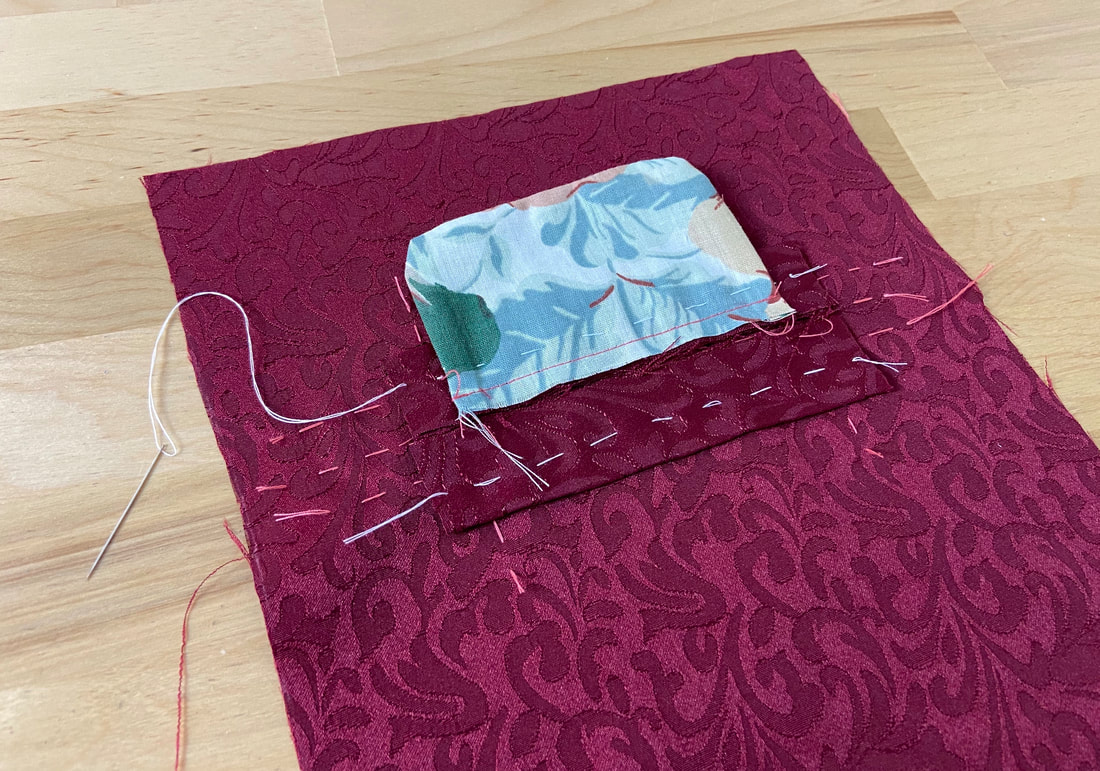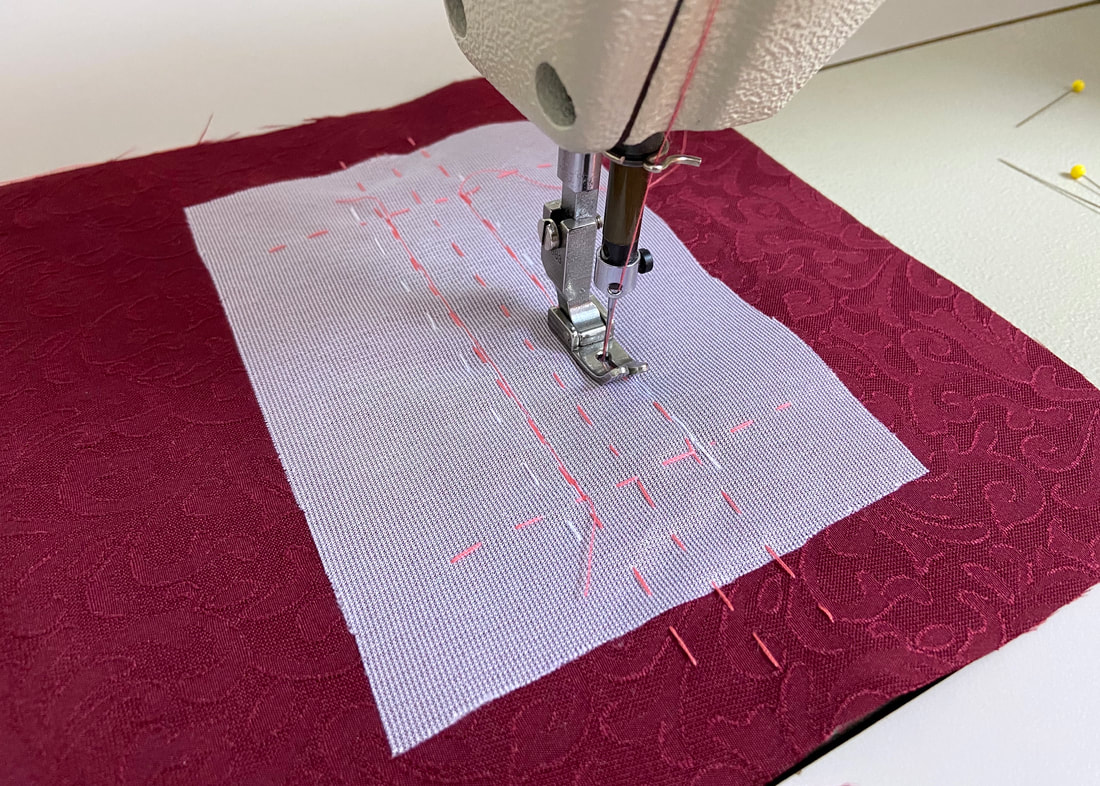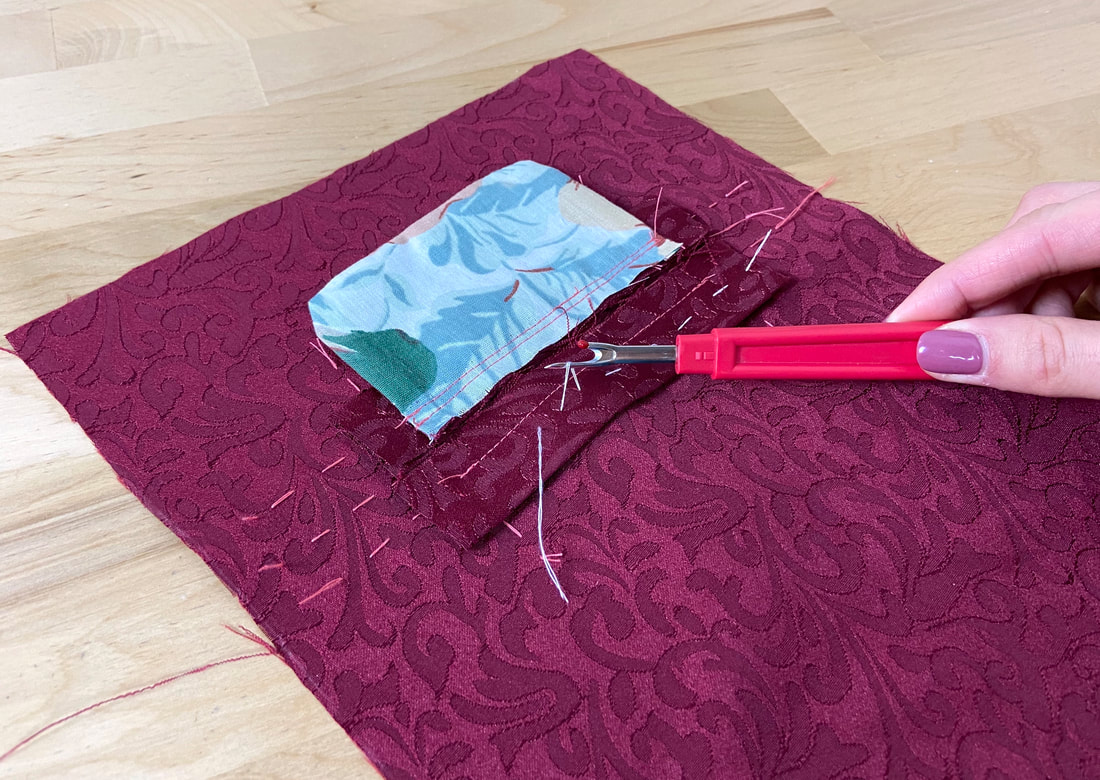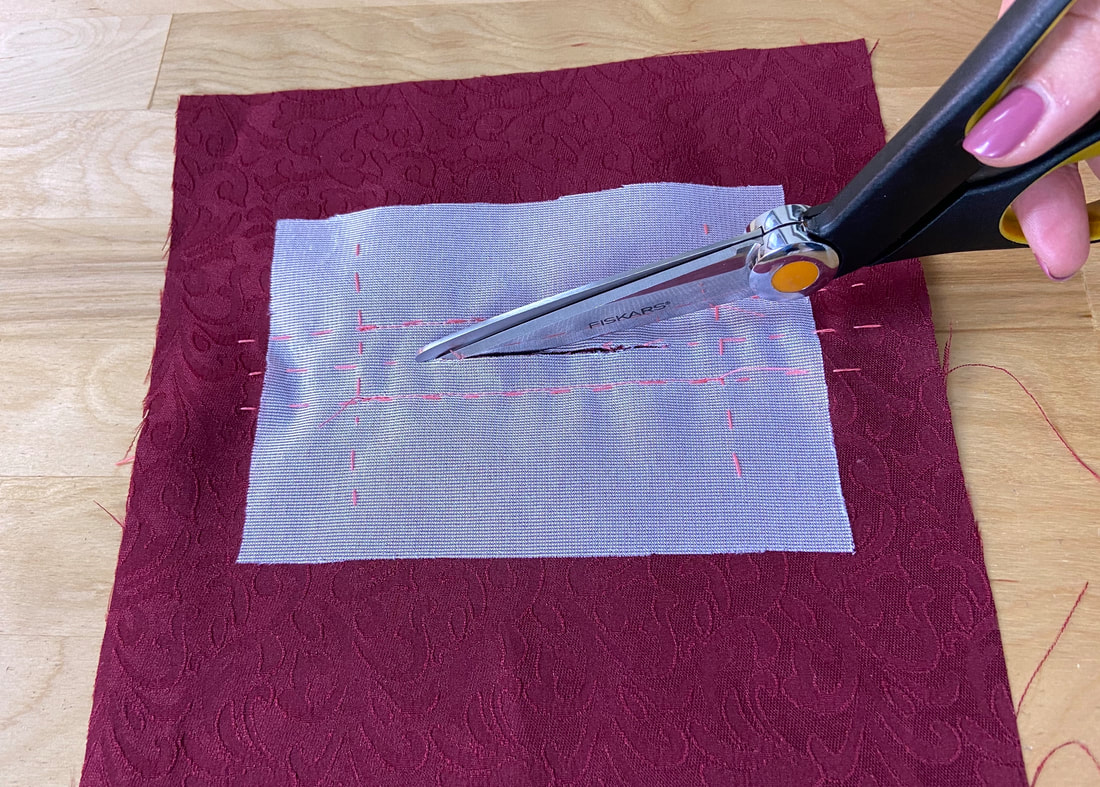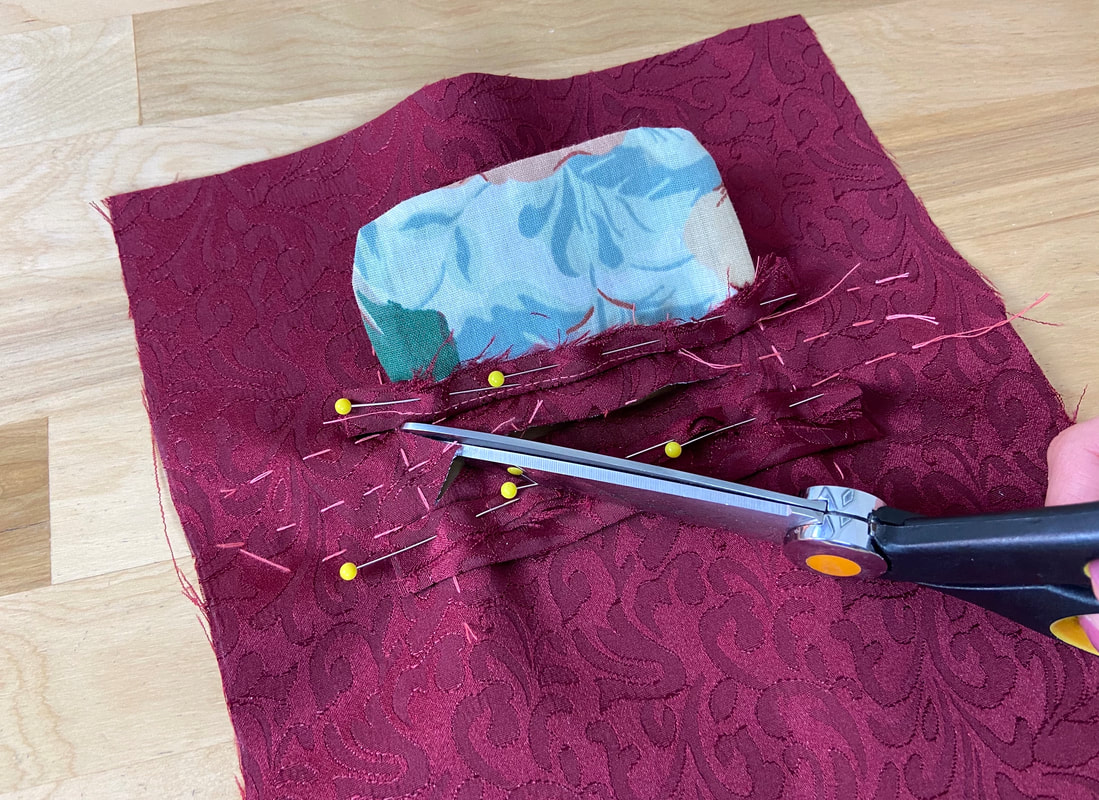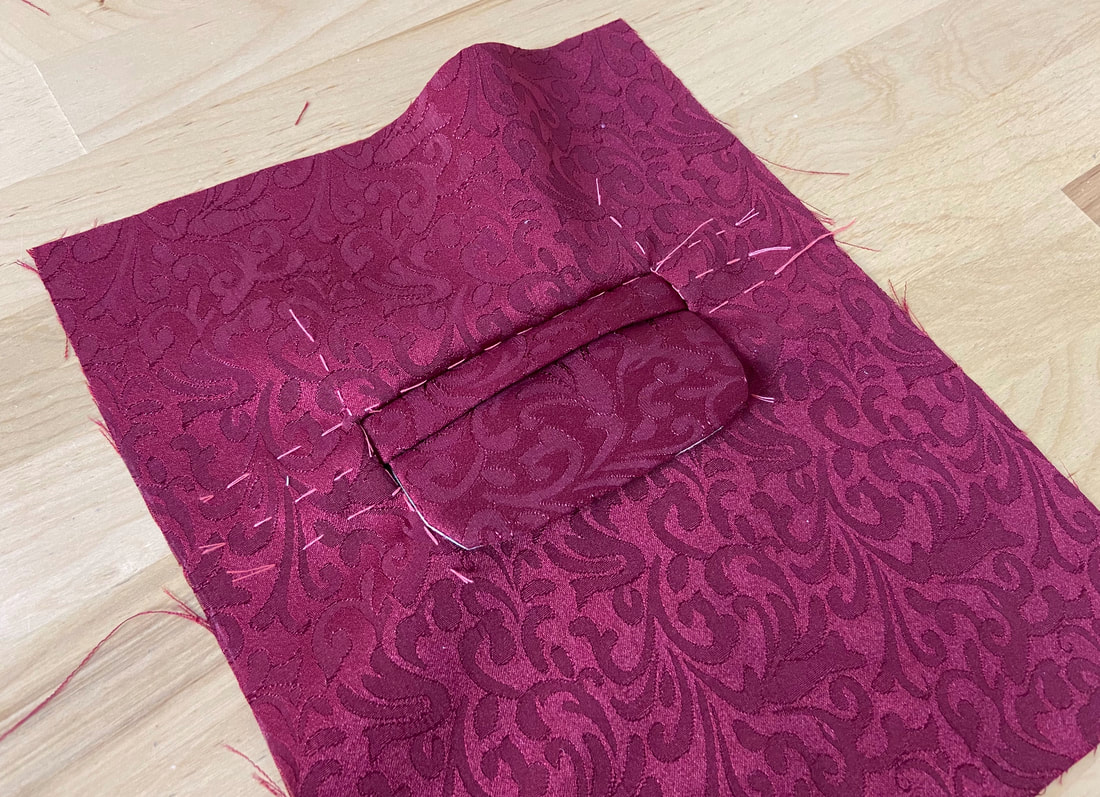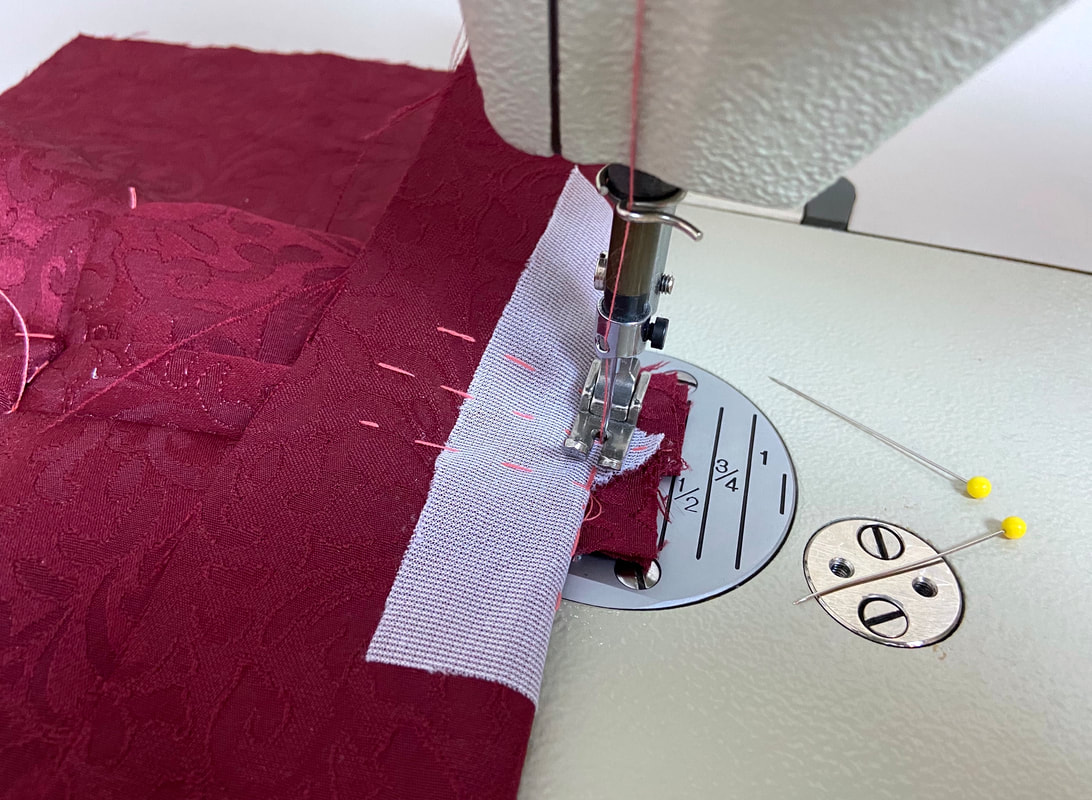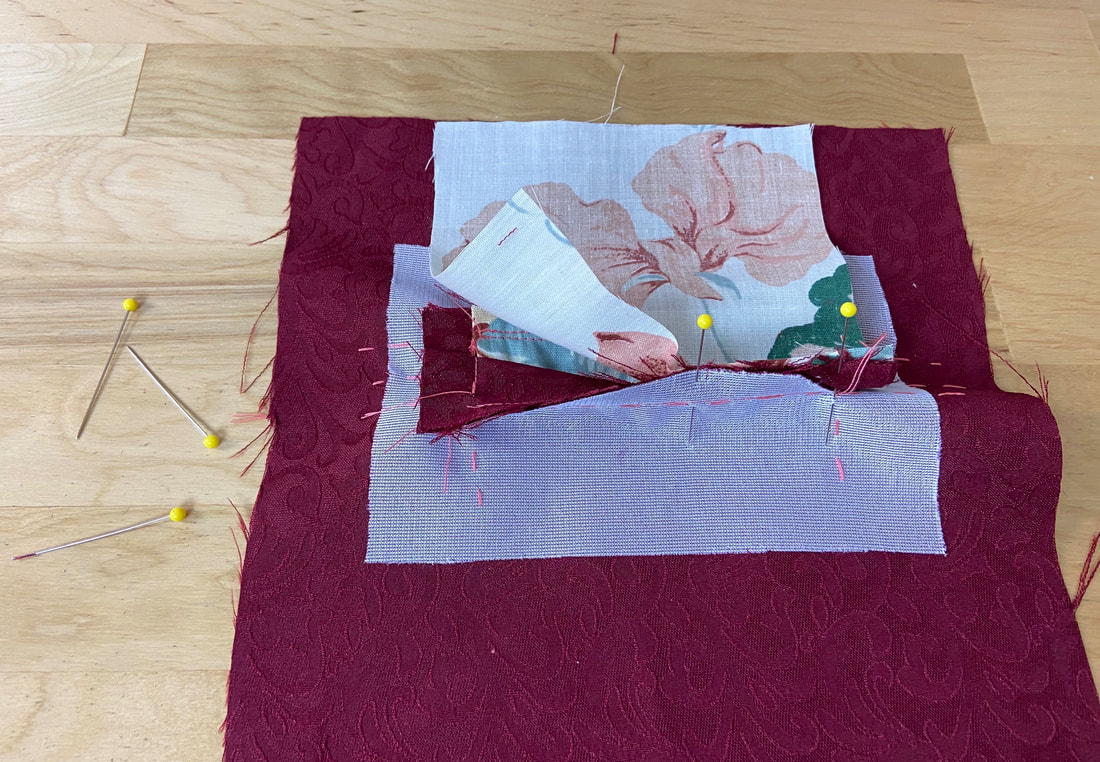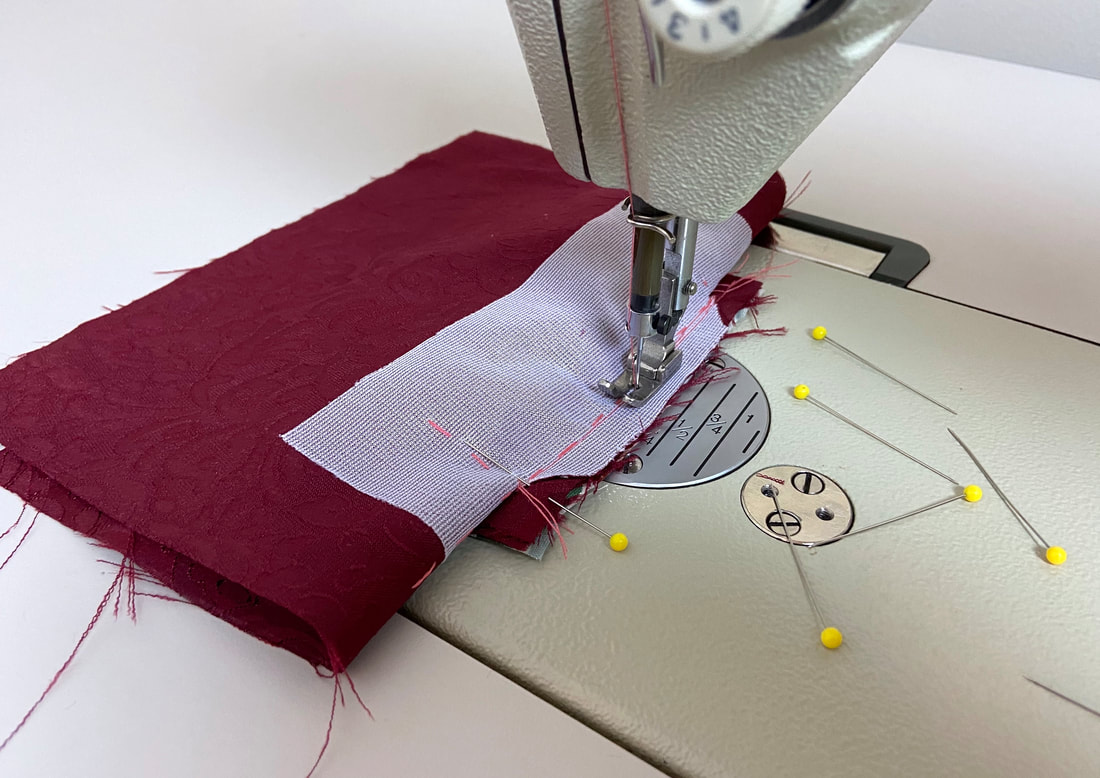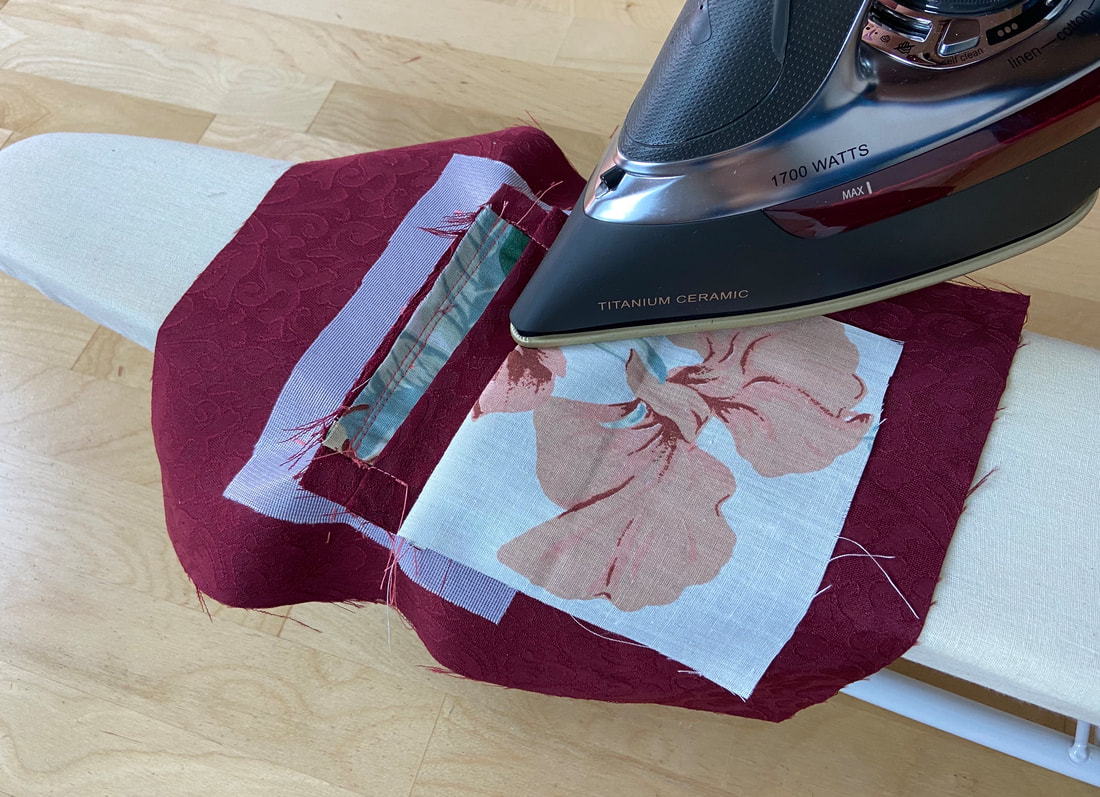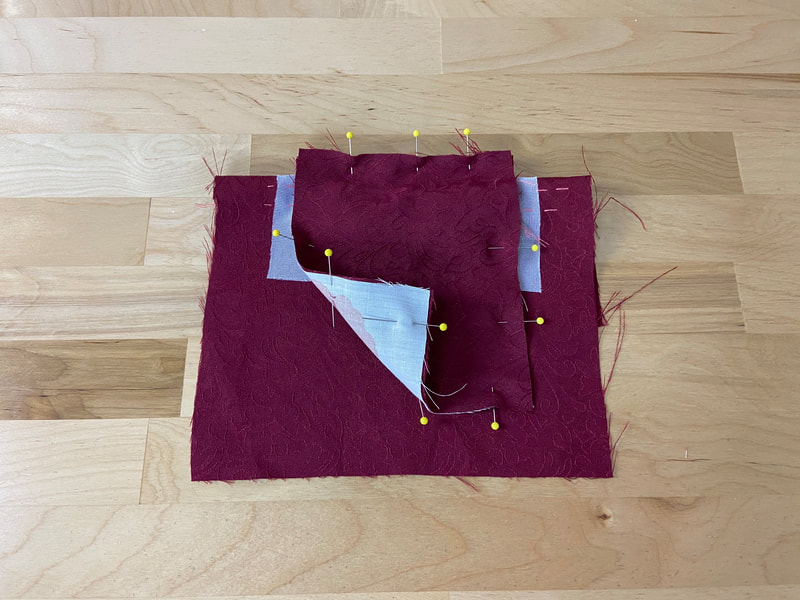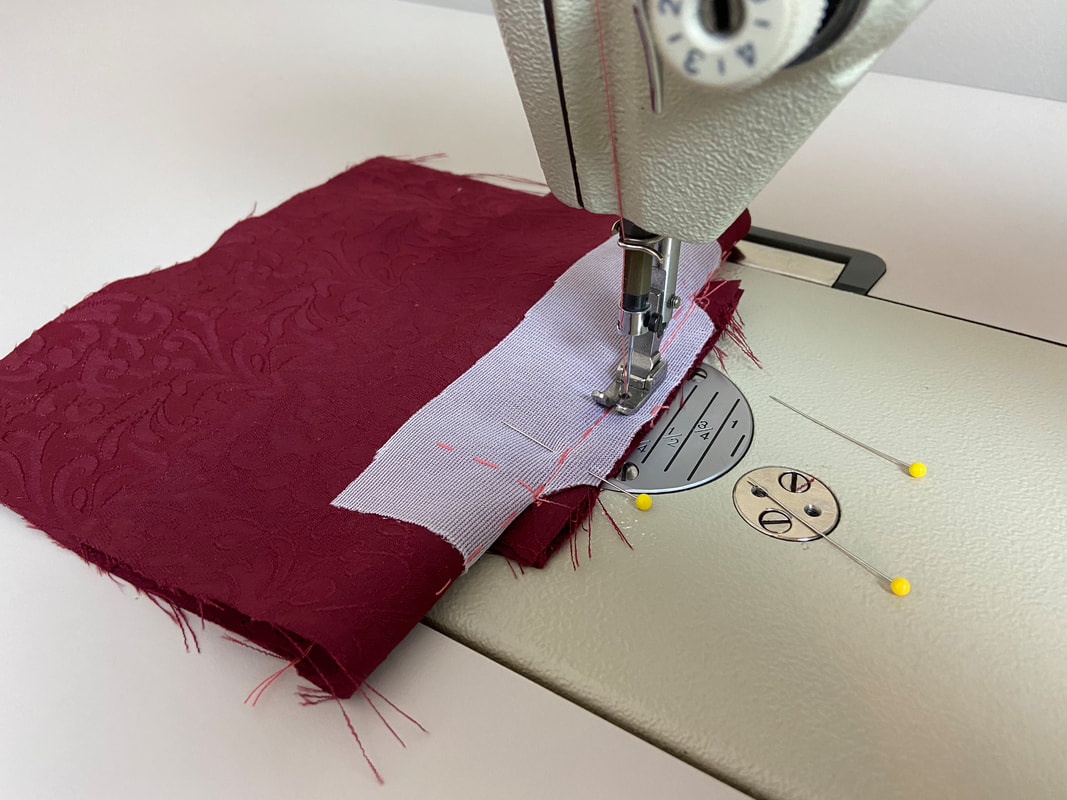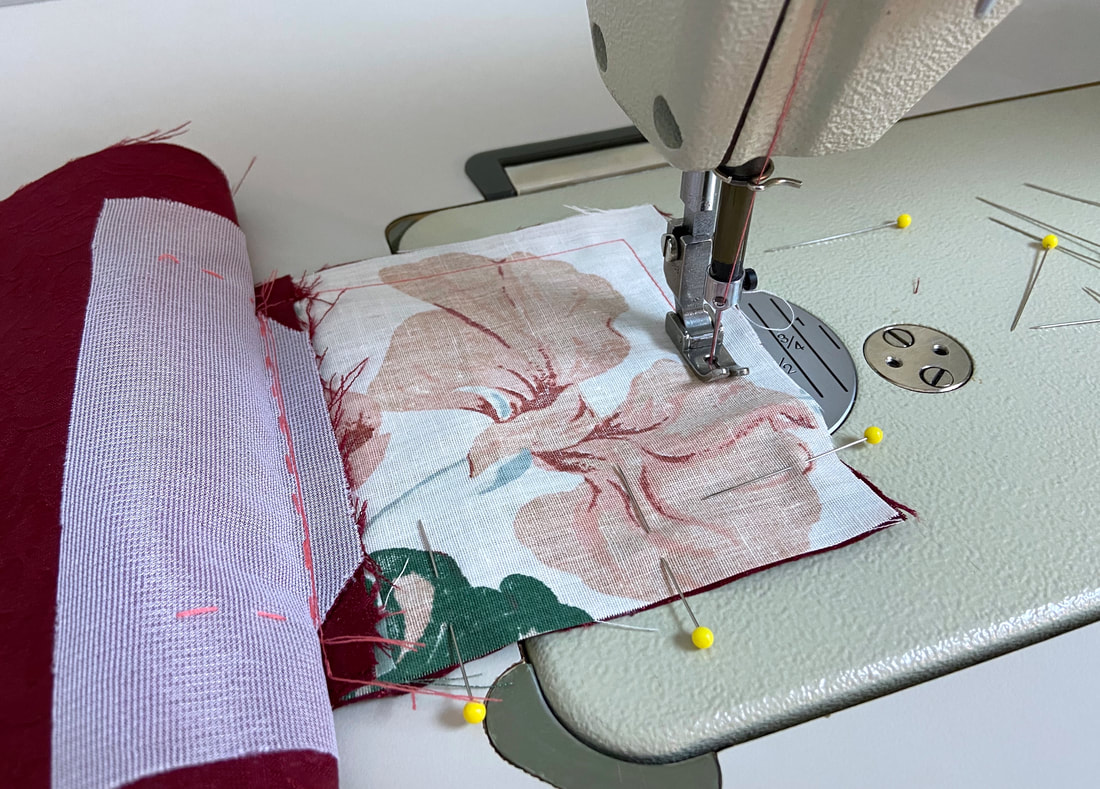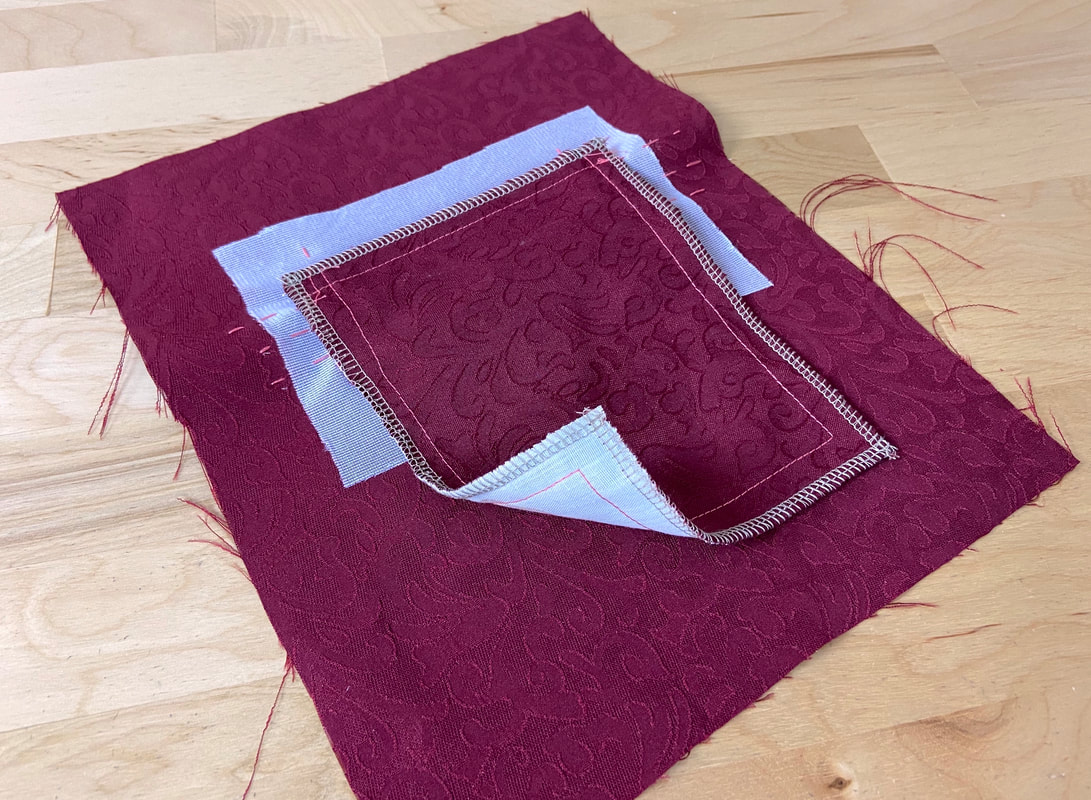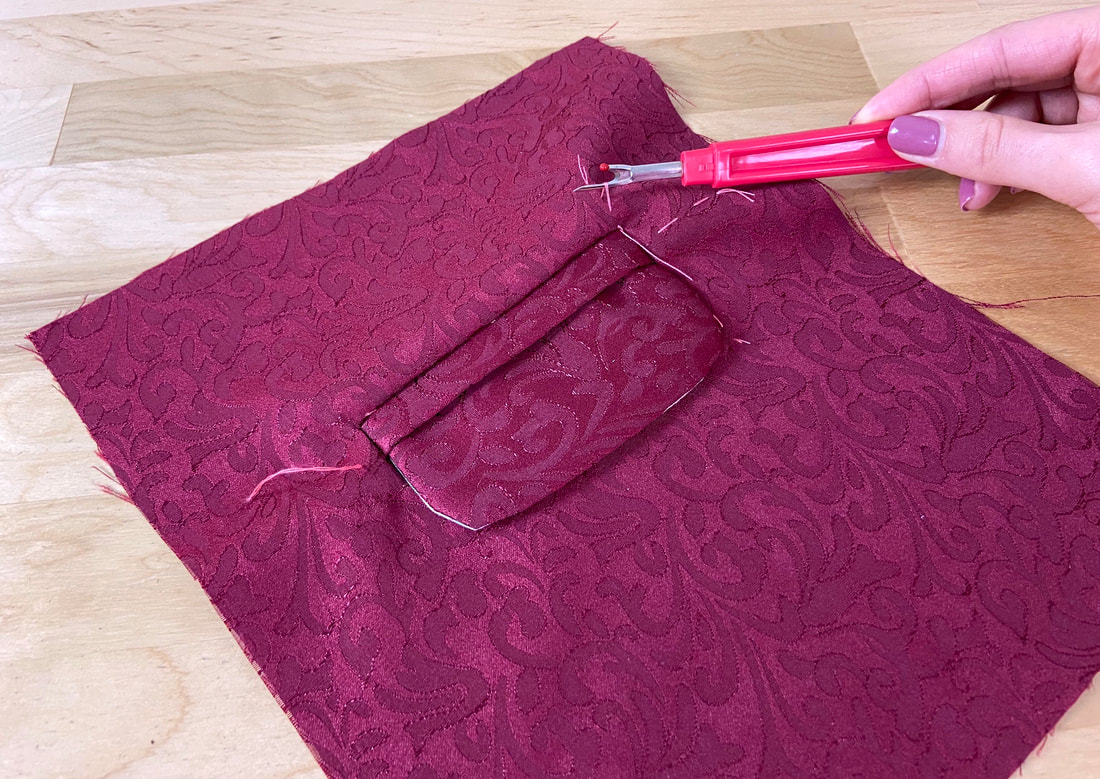Mini Tutorial: How To Sew A Double-Welt Slash Pocket With Flap
1. Start by cutting your pocket pieces. In this case, you'll need two welt pieces, two flap pieces (one self and one lining), a large pocket piece, and a small pocket piece.
Cut matching fusible interfacing for each welt and an interfacing piece for the flap self. Trim the seam allowance along all interfacing edges.
Note: You can use the same patterns to cut all corresponding interfacing portions.
Cut matching fusible interfacing for each welt and an interfacing piece for the flap self. Trim the seam allowance along all interfacing edges.
Note: You can use the same patterns to cut all corresponding interfacing portions.
2. Fuse the interfacing to the wrong side of each corresponding welt piece as shown. Fold each welt down the center and iron to crease the fold line. As a result, you should have two folded and interfaced welt pieces.
3. Fuse the flap interfacing to the wrong side of the self flap layer. Next, align the flap's lining to the flap self with face sides touching, and insert pins perpendicular to the sides and curved bottom edge. Leave the top edges open (unpinned).
4. Stitch the flap layers together along the side and bottom curved edges following the designated seam allowance - 1/2" in this example.
5. To minimize bulk, trim the seam allowance down to about 1/4". Clip wedge notches at the flap's most curved areas. These notches will ensure a finished flap edge that remains smooth and tension-free.
6. Turn the finished flap on its right side and iron the finished curved edge.
7. Fuse a piece of interfacing to the wrong of the garment at the desired slash pocket location. The interfacing will add stability and strength to the finished pocket application.
6. From the right side of the garment, mark the exact pocket opening lines with hand basting. Extend the hand basted lines by about 1" at each corner. Don't forget to mark the center line (as shown above) as this will be helpful in the slashing process.
7. Place the flap on top of one of the welts such that the raw lengthwise edges align and the flap is centered on the welt. Pin perpendicularly to secure. Machine stitch the edges together to keep them in place during the rest of the construction process to follow.
8. Place the welts on top of the hand basted pocket lines such that the welt's lengthwise seamlines match the pocket opening (hand basted) lines. The welt that houses the flap should be positioned at the top with the flap's underside (lining) facing up as pictured above. In this case, the pocket opening is 1" tall and the welts' lengthwise seam allowances are 1/2", thus the welts' raw edges abut perfectly at the center.
Hand baste the welts in this position to secure them for the stitching process to follow.
Hand baste the welts in this position to secure them for the stitching process to follow.
9. From the wrong side of the garment, stitch along the pocket's top and bottom lengthwise lines starting and ending the stitch at each rectangular corner. When complete, the two stitches should be perfectly in line. Once stitched, remove the hand basting (applied in Step 8 above) using a seam ripper.
10. Slash through the garment layer (only) following the center line as a guide. Stop at about 1/2" from each side.
11. Next, slash into each corner, stopping right at the beginning of the welt attachment stitch applied in Step 9 above- repeat on both sides. As a result, you should have a triangle-shaped extension on each side of the pocket opening.
12. Flip the two welts to the wrong side of the garment through the slashed opening, and flatten the layers with your hand.
13. Peal the layers back on each pocket side and stitch at the base of each triangle extension catching the two welts underneath. Repeat on both sides of the pocket opening.
14. From the wrong side of the pocket application, align the smaller pocket piece to the bottom seam allowance edge and insert pins perpendicularly as shown. Bring the seam allowance out and move all other layers out of the away. Stitch the pinned edges following the existing welt stitch.
15. Iron the resulting seam with the pocket layer pointing downward. Place the larger pocket layer on top of the pocket application such that the already-attached, shorter pocket piece aligns with the larger pocket piece edges. Insert pins perpendicularly along all edges to secure the pocket bag.
16. Start by stitching the top welt seam allowance to the pinned pocket layer following the existing stitchline as a guide. To complete the functional pocket bag, stitch the pocket layers together along the side and bottom edges.
17. Last but not least, encase the raw pocket bag edges with a serging or zig zag stitch to further strengthen and prevent them from unraveling. You can use any other clean-finishing technique as long as it does not add unnecessary bulk and thickness to the finished application.
Finally, remove all hand basting stitches with a seam ripper. Iron the finished pocket edges one last time to complete the application. Use a protective cloth if working with heat sensitive fabrics and/or ironing from the pocket's right side.

